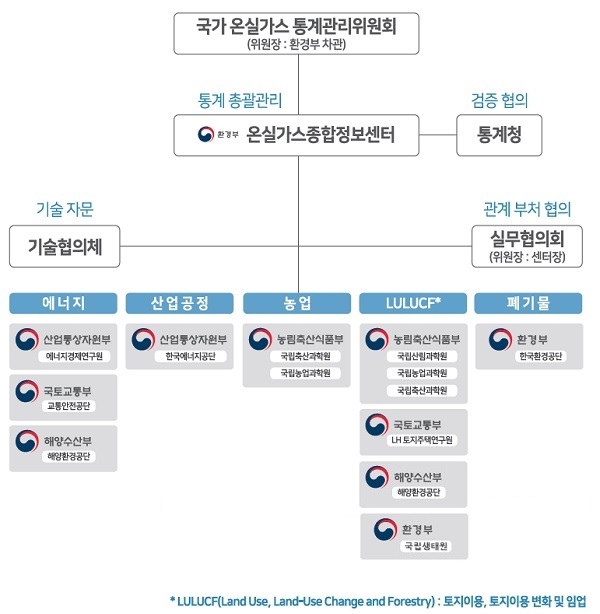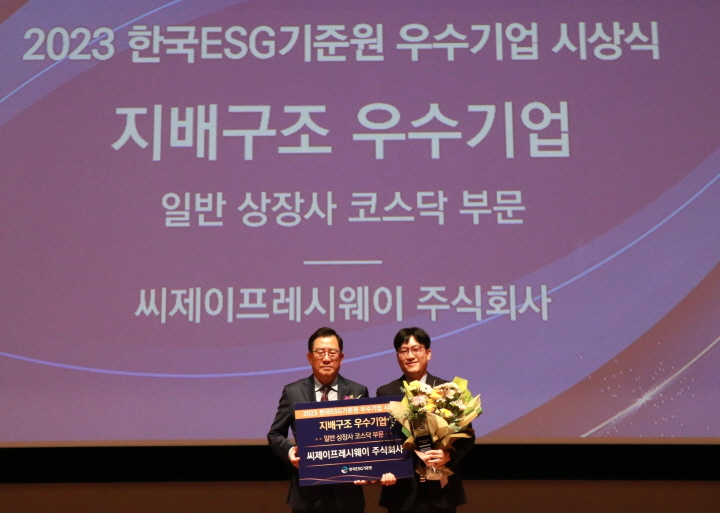
[finance daily reporter Jeong kyeong chun] The Greenhouse Gas Information Center (Director Jeong Eun-hae) under the Ministry of Environment announced on the 2nd that, after deliberation by the ‘National Greenhouse Gas Statistics Management Committee (Chairman Lee Byeong-hwa, Vice Minister of Environment)’, it has finalized the national greenhouse gas emissions for 2022 at 724.29 million tons, a decrease of 16.68 million tons (2.3%↓) from 740.98 million tons in the previous year (2021).
The Greenhouse Gas Information Center calculates and discloses national greenhouse gas emissions every year in accordance with the ‘Basic Act on Carbon Neutrality and Green Growth for Climate Crisis Response’, and confirms national greenhouse gas emissions for the year before last (Y-2) through the following procedures: ‘Provision of compilation guidelines (December of previous year) → Compilation of statistics by management agency (March to November) → Verification by center and revision/supplementation by management agency (April to November) → Working-level consultation/management committee (December) → Announcement of statistics (end of December)’.
In addition, all Parties to the United Nations Framework Convention on Climate Change are required to submit their greenhouse gas emissions statistics to the United Nations using the new international standard, the 2006 Intergovernmental Panel on Climate Change (IPCC) Guidelines, in accordance with the Paris Agreement’s Implementation Guidelines (2018).
The 2022 national greenhouse gas statistics, which were recently finalized and released, were also calculated by applying the national greenhouse gas emissions from 1990 to 2022 in accordance with the ‘2006 Intergovernmental Panel on Climate Change (IPCC) Calculation Guidelines’.
According to this, national greenhouse gas emissions in 2022 were analyzed to have decreased compared to the previous year across all sectors, including energy, industrial processes, agriculture, and waste.
However, due to the increase in the use of hydrofluorocarbons (HFCs) used as refrigerant gases in refrigerators and air conditioners, the ‘use of alternatives to ozone layer depleting substances (ODS)’ sector in the industrial process sector increased by about 2.8 million tons (↑9.5%) compared to the previous year (2021), and the amount of greenhouse gases absorbed in forests, etc. decreased by about 1.2 million tons (↓3.0%) compared to the previous year (2021) due to the impact of forest fire damage (such as the large-scale forest fire in Uljin).
In addition, the center also calculated national emissions (1990-2022) using the existing ‘1996 Intergovernmental Panel on Climate Change Calculation Guidelines (1996 IPCC Guidelines)’ in parallel to check the status of implementation of annual reduction targets of the ‘2030 National Greenhouse Gas Reduction Targets (NDC)’ and released the results this time.
Meanwhile, in the process of verifying national greenhouse gas emissions, it was confirmed that some of the coal consumption in the ‘Energy Statistics’, which is the basic data for energy sector emissions, was omitted. In addition, it was announced that energy statistics for other sectors, such as industry, in addition to the transition sector were also organized and reflected in the greenhouse gas statistics from 2016 to 2022 (commonly reflecting the 1996 IPCC guidelines and the 2006 IPCC guidelines).
Accordingly, the emissions from 2016 to 2022 have been changed to increase slightly compared to the previous announcement (September 10, 2024). In addition, the provisional greenhouse gas emissions for 2023 (based on the 1996 IPCC guidelines) announced on September 10 last year have also been changed to increase by approximately 24.75 million tons in the transition sector.
Following the finalization of the 2022 national greenhouse gas statistics, the government plans to proceed with follow-up procedures, including statistical changes, for two reports that were reviewed by the Carbon Neutrality, Green Growth Committee at the end of October last year.
First, the ‘First Biennial Transparency Report (BTR)’ submitted to the international community every two years in accordance with the Paris Agreement will be submitted to the UN with the latest information, including reflection of the national greenhouse gas statistics for 2022 in the previously reviewed report. In addition, for the ‘2023 Greenhouse Gas Reduction Target Implementation Review’, a re-examination will be conducted according to changes in provisional emissions, and a related report will be submitted to the National Assembly.
In addition, the Ministry of Environment and the Ministry of Trade, Industry and Energy plan to continuously improve the quality of national greenhouse gas statistics submitted to the international community, including by improving the accuracy of energy statistics, which are the main basic data for greenhouse gas emissions.
To this end, the Ministry of Trade, Industry and Energy plans to strengthen internal and external verification throughout the entire energy statistics data collection and preparation process. The Ministry of Environment plans to improve the efficiency and accuracy of statistical verification work through standardization of the database (DB) for national greenhouse gas-related basic statistics, system linkage, etc., and to promote the establishment of a ‘National Carbon Neutral Integrated Platform’ to provide high-quality climate and greenhouse gas information to industries, local governments, etc.
The government’s plan to strengthen statistical quality is expected to be included in the ‘3rd National Greenhouse Gas Statistics Comprehensive Management Plan’ scheduled to be finalized in the first half of 2025.




